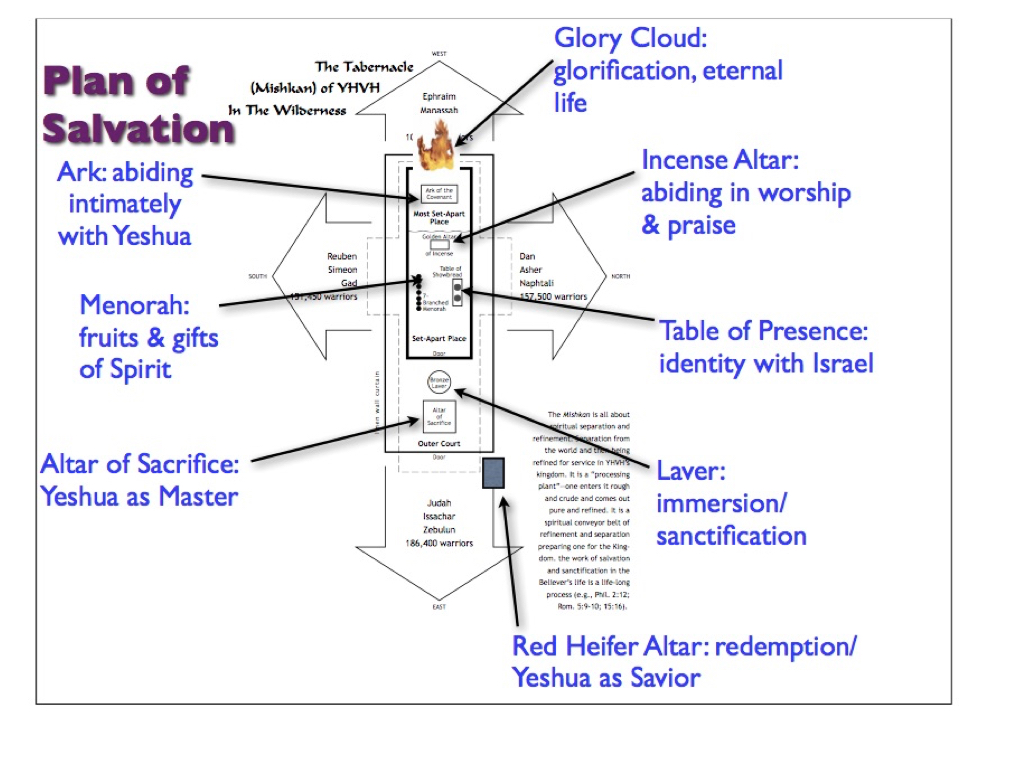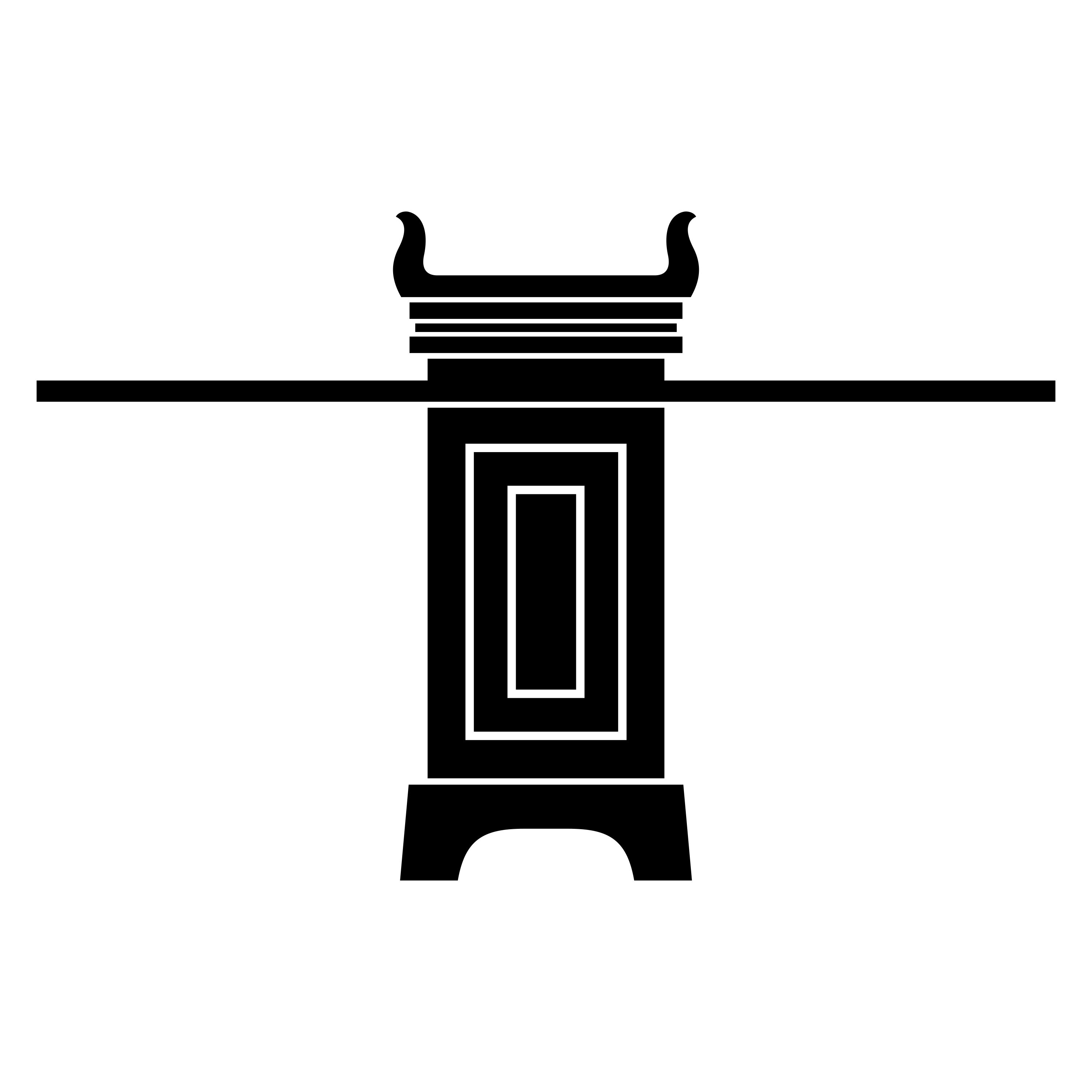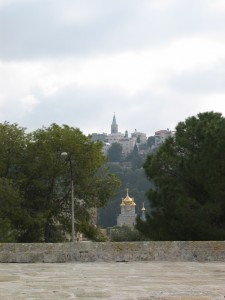The Tabernacle of Moses is a giant gospel tract that explains the entire Bible—YHVH’s plan of salvation from Genesis to Revelation—in a simple child-like way, so that our human pea brains will be able to understand that which is, in reality, way beyond our comprehension.
This post contains A LOT of info, so grab a cup of coffee (or two or three) and get the coffee “anointing” and sit down and learn some things about the Tabernacle of Moses that you’ve probably never heard anywhere else. I promise that you will be blessed (and I don’t make promises that I can’t keep). This is because YHVH gave me these revelations many years ago, so I give him all the glory and credit.
First, the Tabernacle is YHVH’s plan of salvation or redemption for humans. Here’s a quick outline of this. We won’t cover this part in great detail here, since we’ve gone over these things previously on this blog over the past few weeks. (Please review each of the furnishings in the tabernacle to see how they relate to the seven and eight steps in YHVH’s plan of salvation.)
The Bible Is the Story of Reconciliation Between Two Lovers—The Tabernacle Contains the Outline of that Love Story
Love and romance has captured the imagination of man since time immemorial. Today we see this fascination evidenced in music, movies, literature and numerous other ways including modern man’s obsession with sexuality and even, sadly, in rise of pornography and the societal acceptance of sexually perverse lifestyles.
The Creator of the universe, the Set Apart One of Israel, the Author of the Scriptures, is captivated by the concept of love and romance as well. He is the Creator of marriage and sex. In fact, his first command to man was to be fruitful and to multiply and to fill the earth with humans (Gen 1:28). To accomplish this involves sexual relations in marriage. The writer of Hebrews declares that marriage is honorable and the marriage bed is not to be defiled (Heb 13:4). Much of the Bible is devoted to the subject of love and marriage. Love and marriage at a human level is merely a shadow of something much deeper: love and marriage at a spiritual level. John 3:16, the most popular verse in the Bible, talks about Elohim’s quintessential love for mankind and alludes to this higher spiritual level.
Most people understand that poetry and poetic prose is the language of love, yet few realize that much of the Scripture is poetry (or poetic prose) in Hebraic style. Much of this poetic style is lost in the translation from Hebrew into other languages like English. For example, all the books of Psalms, Proverbs, Job, Song of Solomon, Ecclesiastes and most of the writings of the Hebrew prophets are written in a poetic style. Many of Continue reading




